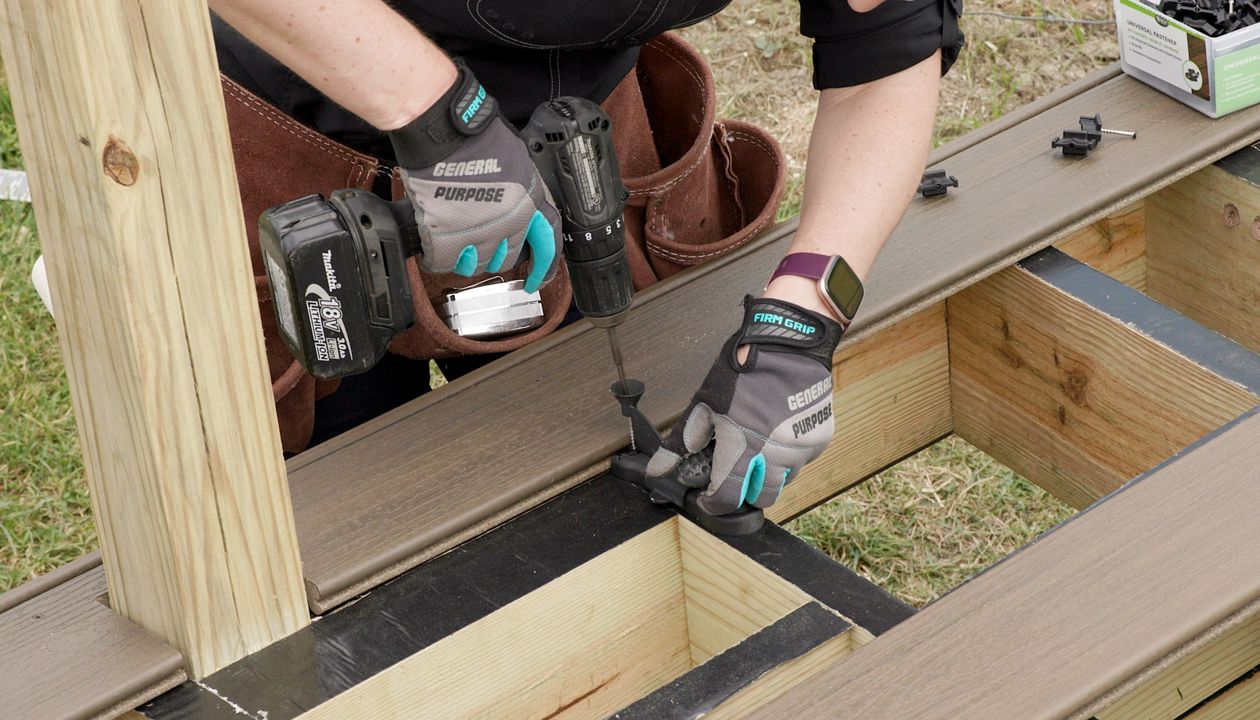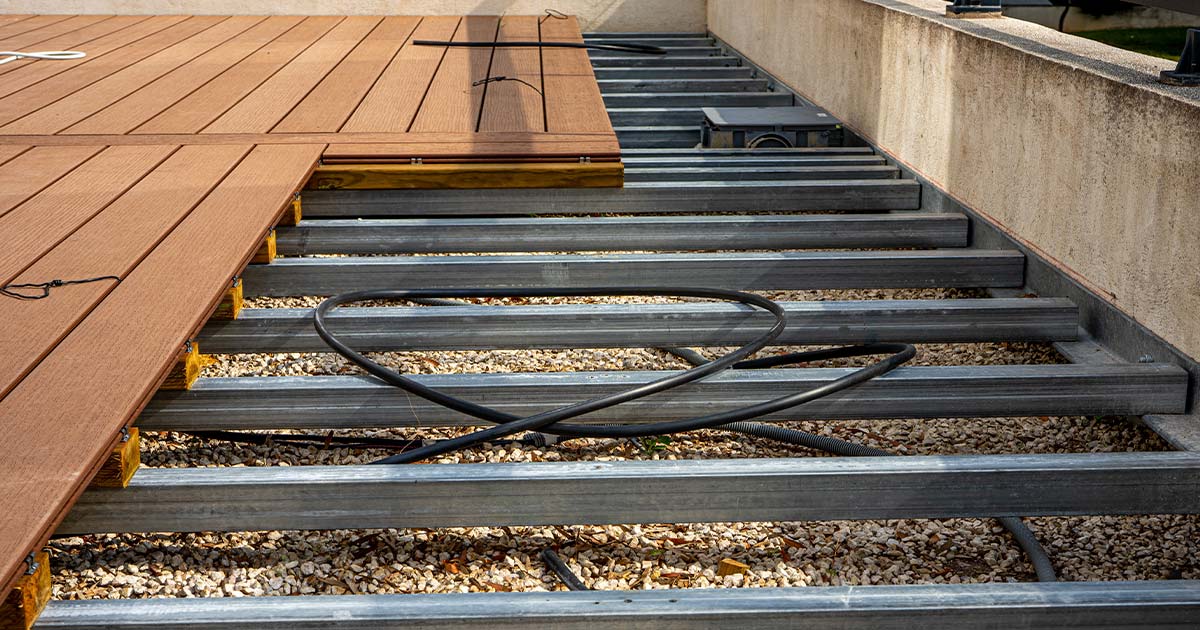Trust a local deck installer Austin to bring your backyard vision to life efficiently and affordably.
Trust a local deck installer Austin to bring your backyard vision to life efficiently and affordably.
Blog Article
Just how to Pick the Right Materials for Your Deck Installation Project
Selecting the suitable products for your deck installment job can seem overwhelming. There are countless aspects to take into consideration, from resilience and maintenance to aesthetic appeals and environmental influence. The selection between traditional timber and composite products, each with its very own collection of advantages and disadvantages, can be especially challenging. The key is to balance your budget plan, layout preferences, and lifestyle needs to develop a deck that will improve your outdoor area for several years ahead.
Recognizing the Different Types of Deck Products
When embarking on a deck installment project, the option of materials ends up being a pivotal choice. Numerous choices are readily available, each with unique attributes and aesthetic charm. Conventional timber, as an example, supplies an ageless, all-natural look and is commonly a lot more cost-effective. It can warp over time and needs regular maintenance. Composite materials, on the other hand, are a blend of timber and plastic, offering toughness and resistance to weather components. They require much less maintenance compared to wood however are usually more expensive. Another choice is plastic, which is practically maintenance-free and resistant to insects and rot, albeit much less natural-looking. By recognizing these distinctions, property owners can make an extra informed choice on the most suitable deck material for their specific requirements.
Reviewing the Durability and Upkeep Requirements of Deck Materials
Evaluating the durability and upkeep needs of deck products is an essential action in deck setup. Toughness entails the product's capability to endure severe weather condition problems, wear and tear, and its durability.
Understanding maintenance requirements is just as essential. Some products require normal securing or discoloring to maintain their look and withstand moisture damages, while others, like composite outdoor decking, demand much less maintenance. By reviewing these factors, one can select the most appropriate outdoor decking product, guaranteeing an equilibrium in between durability, maintenance requirements, and visual appeal.
Expense Analysis: Contrasting Timber and Compound Decking
Although expense might originally look like an additional issue, it is a substantial factor when comparing wood and composite outdoor decking. Wood, typically a less expensive option, has a lower upfront cost. Nonetheless, gradually, maintenance expenditures can gather, possibly making timber more pricey in the future. These upkeep costs might consist of staining, securing, or replacing harmed boards. On the various other hand, composite decking, while more expensive initially, calls for much less upkeep, potentially lowering lasting expenses. It's crucial to remember that composite outdoor decking isn't impervious to put on and tear, and replacement expenses can be high. Therefore, possible deck owners should consider their budget and determination to keep their decks when deciding between wood and composite outdoor decking.
Aesthetics and Layout Flexibility of Decking Materials
While price is a crucial factor to consider, the visual appeal and layout adaptability of outdoor decking products additionally play a significant role in the decision-making process. Different products offer varying degrees of visual charm. For instance, all-natural wood decking supplies a classic, ageless look, while composite materials offer a vast array of colors and appearances to suit diverse tastes and designs. Likewise, style flexibility refers to the capacity to shape and adjust the outdoor decking material to satisfy particular layout needs. Wood, for circumstances, uses high layout adaptability because of its simplicity of cutting and shaping. Composite materials, while much less adaptable in design, are still adaptable enough for many deck layouts. These factors, therefore, are vital components in the selection of outdoor decking material.
Ecological Impact of Decking Materials
When picking outdoor decking products, one have to think about not only visual appeals and sturdiness, yet additionally the ecological impact. It is necessary to evaluate the sustainability of products and discover recycled decking options. Understanding the possible influence on neighborhood ecological communities will certainly guarantee a much more eco accountable selection.
Assessing Product Sustainability
In the realm of deck construction, analyzing material sustainability is a critical action. This entails evaluating the environmental effect of each prospective product, taking into consideration aspects such as the energy needed for its manufacturing, its carbon footprint, and its end-of-life disposal or reusing options. As an example, timber is a renewable energy, however unsustainable logging methods can lead to logging. Alternatively, composite decking materials typically combine timber and plastic, minimizing the demand for brand-new hardwood yet raising dependence on nonrenewable fuel sources. Aluminum and other steels may be more sturdy and recyclable, but their extraction and processing can be energy-intensive. Hence, the selection of outdoor decking materials need to stabilize functionality, visual appeals, expense, and sustainability to make certain an accountable and lasting installation.
Recycled Decking Options

Compound decking is particularly prominent due to its durability and simplicity of maintenance. Recycled plastic outdoor decking, on the other hand, is extremely resilient and needs minimal upkeep.

Effect On Local Ecosystems
While the benefits of utilizing recycled products for outdoor decking can not be overstated, it's equally essential to think about the broader environmental effects of these choices. The extraction, handling, and transport of materials can exceptionally affect regional environments. Deforestation for lumber outdoor decking adds to environment loss and climate change. Also the production of composite products can launch harmful discharges. Alternatively, making use of recycled or sustainably sourced materials can aid reduce these results. Thinking about the lifespan of materials can lower environmental impact; longer-lasting choices call for less frequent substitute, therefore preserving resources. Correct disposal of old outdoor decking is important to lessening land fill waste. Essentially, an eco-conscious deck job demands mindful product option, sustainable sourcing, and accountable disposal.
Making Your Decision: Tips for Choosing the very best Deck Materials
As the article shifts into the subtopic of "Making Your Final Choice: Tips for Selecting the most effective Deck Materials", it is crucial to comprehend the variety of deck materials readily available. Striking an equilibrium between toughness and looks is necessary in this option procedure. The following discussion will lead viewers in making an enlightened choice based upon these vital considerations.
Recognizing Various Deck Materials
The task of choosing the ideal materials for your deck installment can seem daunting as a result of the huge selection of options offered. Nonetheless, understanding the different materials can streamline this procedure. Timber is a popular selection, offering a traditional visual and cost. Kinds of wood used include pressure-treated lumber, cedar, and redwood. Composite products, made from a blend of timber and plastic, are low-maintenance and resistant to rot and pests. Plastic or PVC decks are much more long lasting and call for much less moved here maintenance than composite materials, yet they can look much less all-natural. Light weight aluminum decks are strong, lightweight, and resistant to rot, however they are also the most costly option. Each product has its own benefits and disadvantages, making it vital to consider your details demands before making a final decision.
Toughness vs. Aesthetics Balance
Balancing durability with aesthetic appeals can be an obstacle when picking deck materials - deck installation. High-traffic areas may demand durable products like composite decking, which holds up against wear and tear but may do not have the all-natural elegance of timber. Property owners require to other strike an equilibrium, considering both the deck's practical needs and their visual choices.
Final thought
In final thought, choosing the appropriate products for your deck installment task requires cautious consideration of elements such as durability, upkeep, expense, looks, and ecological effect. Whether you go with traditional timber or composite materials, your choice must line up with your budget, style choices, and lifestyle. Eventually, the best outdoor decking product is one that enhances your outdoor space and supplies enjoyment for years to find.
Report this page